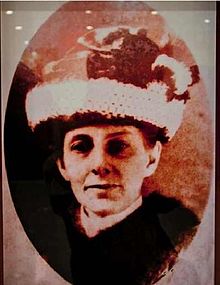
BY CARA GIAIMO
“You might not know about Regina Anderson, but you’ve probably heard of many of her friends. On a typical day in 1923 or 1924, Anderson might leave her desk at the 135th Street Branch of the New York Public Library and drop a letter to W.E.B. Du Bois in the mailbox. She may go home to her apartment on St. Nicholas Avenue to check up on her couchsurfer, Zora Neale Hurston. Or she might hit the town with Countee Cullen, and then finish out the night cooking bacon and eggs for Langston Hughes.
Nearly a century after it began, the Harlem Renaissance remains one of the preeminent cultural movements in American history. And although Anderson doesn’t show up in many contemporary accounts of the period, she was there the whole time: lending out books, throwing parties, fighting for opportunities of her own, and enabling the spread of ideas that made the era what it was.
“She was that connection,” says historian Ethelene Whitmire, author of Regina Anderson Andrews, Harlem Renaissance Librarian, a biography that seeks to restore Anderson to her rightful place in the movement. “And she was there at the key time, when all the big names were arriving in Harlem.” As Anderson’s life story shows, if you’re trying to write a history book, it’s best not to forget the librarian.
Anderson never meant to come to Harlem at all. When she moved to New York City at age 21, in 1922, she posted up at a downtown YWCA, and applied for a job at the New York Public Library. As Whitmire details in her book, most libraries at that time had some form of segregation in place. Some cities, including Charleston and Dallas, barred African Americans from public libraries entirely. Others, like Atlanta and New Orleans, had separate branches for black clientele.
At the NYPL, all patrons were welcome at all branches, but when it came to employment, there was a certain amount of de facto segregation based on neighborhood demographics. Eastern European applicants were generally sent to the Webster Library on the Upper East Side, Russian-Jewish ones to the Seward Park Branch on the Lower East Side, and black applicants were habitually referred to the 135th Street Branch, in Harlem.
When Anderson was called in for her interview, she found this out firsthand. “Instead of focusing on her previous library experience”—at various institutions in and around her home city of Chicago—“the administrator was most concerned about her race,” Whitmire writes. On her application, Anderson (who had ancestors from Sweden, precolonial America, Madagascar, and India, among other places) had listed herself as “American.”
“I always considered myself an American. I don’t know what else I could be,” she explained to her interviewer. “To us you’re not an American,” he replied. “You’re not white.” And so, although Anderson had never been to Harlem, she, too, was sent to the 135th Street Branch.
At that time, the head of the branch was Ernestine Rose, a white woman who was determined to make the space as useful as possible to the neighborhood. “Rose was someone who was thinking outside the box during that time period, in terms of services for African Americans,” says Whitmire. “She really wanted to reach out to the community.” By the time Anderson started full-time as a junior clerk, in April of 1923, the branch had become a hotspot for many different groups. Over the course of a typical week, the library might host meetings of the local chapter of the NAACP, the Anti-Lynching Crusaders, and a high school boys’ club dedicated to the study of black history.
Anderson’s new post was eye-opening. As Onita Estes-Hicks put it in the African American National Biography, she quickly realized that “she herself was a victim of an educational system that had disregarded black contributions to America,” and set about filling in her own gaps in knowledge. At the same time, she embraced the outreach aspects of her job. She helped to set up weekly talks by Hubert Harrison, a socialist and public intellectual known for his street-corner speeches. She also took over publicity efforts for the North Harlem Community Forum, a weekly lecture series focused on the issues of the day.
The speakers and topics were wide-ranging—one week, radical orator Hubert Harrison talked about Sir Arthur Conan Doyle; another, Margaret Sanger spoke flanked by a police detail, in case she tried to distribute birth control literature—but many of these memorable evenings started thanks to a letter from Anderson. One she wrote in November of 1924, to W.E.B. Du Bois, is typical: it goes over recent highlights of the forum, asks when he will be available to speak there, and then requests an in with one of his friends, so she can send him a similar message.
Meanwhile, as Anderson actively built a network of established names, just being at the library brought her into contact with a number of up-and-comers. A lot of Harlem transplants made visiting the 135th Street Branch a top priority, Whitmire says: “After they got a place to live at the local YWCA or YMCA, they would often head to the library.”
When they arrived, Anderson made a point of securing space for them to work on their projects. This is how she met Langston Hughes, Eric Walrond, and Claude McKay. She also brought new books home—sometimes seven or eight a day—skim them, and put together notes, so that she could recommend these authors to her patrons and to each other. “She was reading everything new that was coming through,” says Whitmire.”
Read the rest of this article here!


